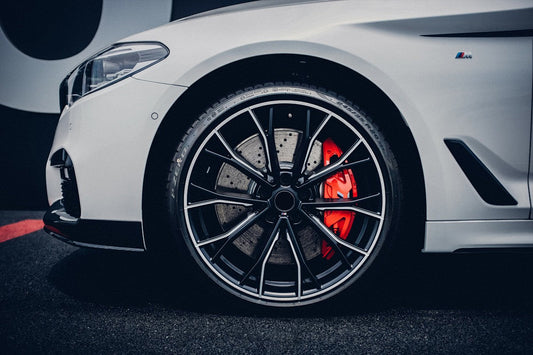
0W-20 vs 5W-20: Key Differences & When to Use Each
Hey there, gearheads and daily drivers alike—ever stared at your oil cap and wondered, “0W-20 vs 5W-20… what’s the big deal?” Maybe you’re eyeing that half-full jug in your garage, debating if swapping them’ll save you a trip to the auto store. Or worse—your high-mileage ride’s been sputtering, and you’re second-guessing if you used the right stuff. Let’s cut through the jargon, shall we? By the time we’re done, you’ll know exactly when to reach for which bottle… and why it matters.
First Off: What Do These Numbers Actually Mean?
Let’s start with the basics—because if you’re mixing oils, you gotta play by the rules. Both 0W-20 and 5W-20 are synthetic oils, but their numbers aren’t just random gibberish. Think of them like a “weather report” for your engine.
The “W” stands for winter—a dead giveaway these oils are built for cold starts. The number before the W? That’s how thick the oil is when it’s freezing outside (like, “will it even flow when you crank the key at 5 AM?”). The number after? That’s its thickness once the engine’s warmed up (because hot oil gets lazy—thinner, but still needs to coat parts properly).
So, 0W-20? At sub-zero temps, it’s super thin (0 weight), but once the engine hits operating temp, it settles into a 20-weight viscosity—just right for lubricating. 5W-20? Slightly thicker when cold (5 weight), but same 20-weight once it’s hot. Big difference? Not yet. But that “0” vs “5” might matter more than you think.
So… Are They Really That Different?
Here’s the tea: at operating temp, these two oils are like siblings—same DNA, just a tiny tweak in their “childhood.” Once the engine’s humming along, 0W-20 and 5W-20 behave almost identically. They lubricate, protect, and keep things running smooth.
But the magic happens when it’s cold. Imagine trying to pour honey vs. water first thing in the morning. 0W-20’s that water—it flows faster, coats engine parts quicker, and reduces wear during those crucial first seconds when you start a cold car. 5W-20? More like honey. It works, but it’s a bit slower to get where it needs to go.
So, in a nutshell: same game, different opening act.
Can You Just… Swap Them? (Spoiler: It Depends)
Let’s say you’re low on oil, and the only jug in the garage is 5W-20—should you panic? Probably not… if you live somewhere mild. But if you’re in, say, Minnesota where winters hit -30°F (-34°C), 0W-20’s that extra “cold cred” might save your engine.
Check the temp ranges:
- 0W-20: Handles the cold like a champ—from -40°F (-40°C) up to 20°F (-6°C).
- 5W-20: Warmer comfort zone—from -25°F (-32°C) up to 20°F (-6°C).
If your neck of the woods dips below -25°F, 0W-20’s your safety net. Below that, 5W-20 might turn into a sludge monster, making starts a nightmare and risking engine wear. But if you’re in Florida, where “cold” is 50°F (10°C)? Swap away—neither will bat an eye.
When to Use Which: Your Cheat Sheet
Still fuzzy on when to reach for which bottle? Let’s break it down by real-life scenarios:
1. Fuel Economy: Squeeze Every Mile
Modern cars (especially hybrids or turbo engines) love 0W-20. Why? That thinner cold viscosity means less friction right when you start driving—so your engine doesn’t work as hard, saving gas. If your ride’s rated for 0W-20, using 5W-20 might cost you a few MPG. Not a big deal? Maybe. But if you’re trying to stretch that tank? 0W-20’s the way to go.
2. Location, Location, Location
Live in a place where winter’s a four-letter word? 0W-20’s your new best friend. Think Alaska, Maine, or the Rockies—places where “cold” isn’t just a season, it’s a lifestyle. If you’re in Texas or Georgia, where the worst cold is a frost on your windshield? 5W-20 works just fine.
3. Viscosity: Thin vs. Thinner
Remember: lower numbers = thinner oil. At startup, 0W-20’s thinner, so it zips through the engine faster. Once it’s hot, both are 20-weight—so they’re equally good at keeping parts slippery. But if your engine’s older, high-mileage, or you tow stuff? Some folks swear by thicker oils (like 10W-30) for extra protection. But 0W-20 and 5W-20? They’re best for modern engines designed for that thinness.
4. Your Owner’s Manual: The Holy Grail
Here’s the golden rule: always check your manual first. If it says “0W-20 only,” don’t get cute with 5W-20—especially if your car’s got a turbo or high compression. Manufacturers test this stuff for a reason. But if it lists both as approved? Swap away, depending on the weather.
5. Quality Matters More Than the Number
Not all oils are created equal. Look for the API “starburst” logo (means it passes modern specs) and the ACEA certification (Europe’s stamp of approval). If a bottle’s missing these? Save your money—it might not protect your engine like it should.
Wrapping It Up: Which Should You Grab?
So, 0W-20 vs 5W-20—what’s the verdict? If you live in a cold spot, drive a newer car, or care about fuel economy, 0W-20’s the upgrade. If you’re in milder climates or just need a reliable backup, 5W-20’s solid.
But here’s the kicker: always follow your owner’s manual. And when in doubt? Reach for the 0W-20—most modern engines love it, and it’s more versatile than its 5W sibling.
Here is a table summarizing the difference between characteristics of 5W-30 vs 0W-20 vs 5W-20 oil for your references.





